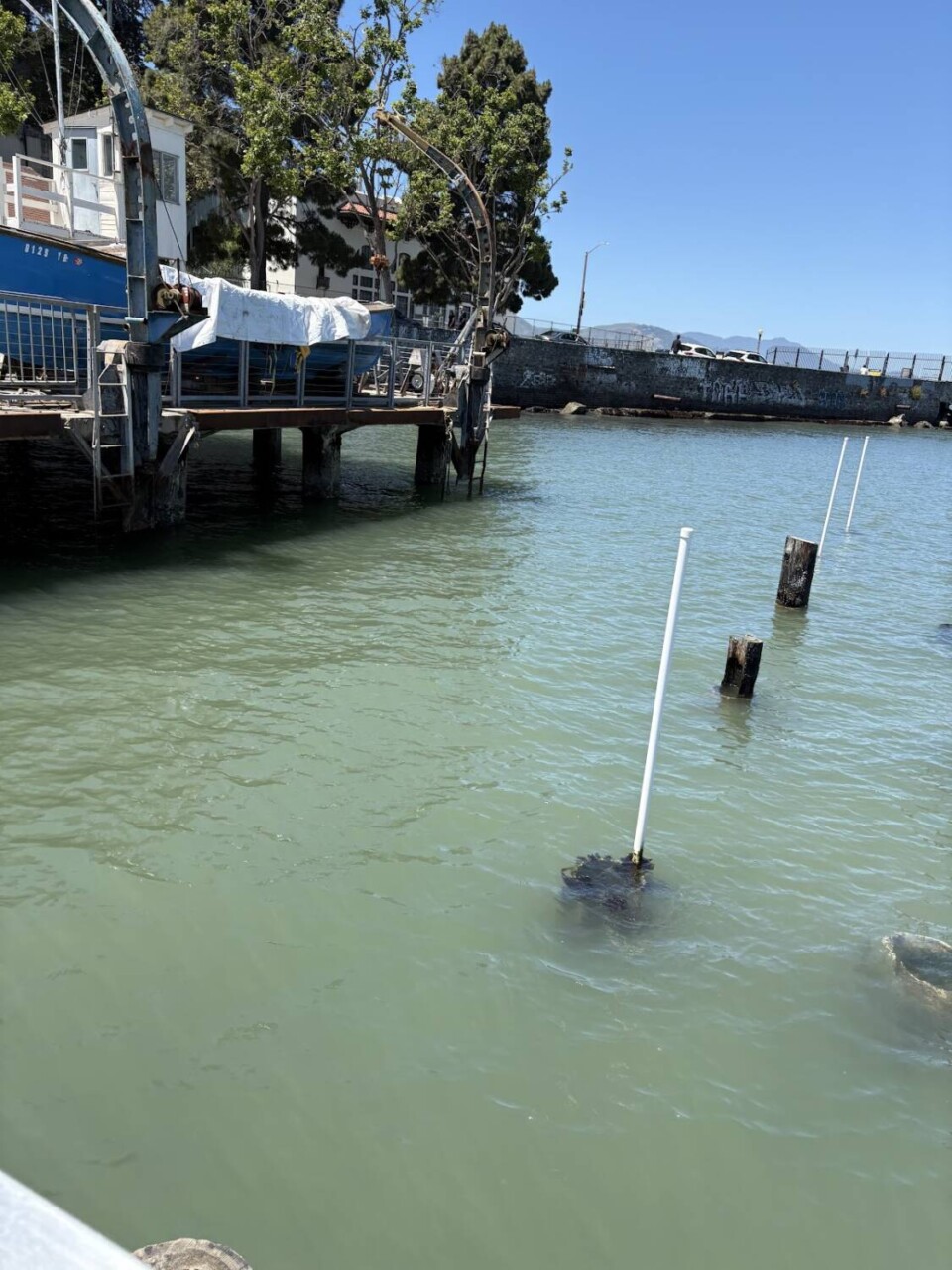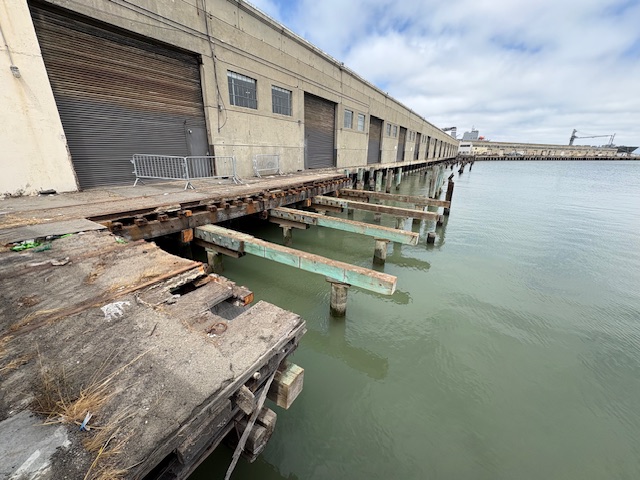
Evidence of dock collapse after corrosion at Port of San Francisco. – Photo: Pearci “PJ” Bastiany
by Pearci “PJ” Bastiany III
San Francisco’s once proud maritime edge is unraveling — one pier, piling and wharf at a time. From District 2’s Aquatic Cove to the sunken piers of District 10’s industrial southeast, a clear pattern has emerged: institutional neglect, bureaucratic deflection and a failure to maintain the Bay’s foundational infrastructure.
Now, even the youth are feeling the fallout.
The remains of the Sea Scout Wharf; PVC pipes exposed – Photo provided by Steve Welch & Sea Scouts
The Sea Scout Story: Climate change and government neglect
At Aquatic Cove, the historic wooden wharf used by the Sea Scouts — a youth maritime leadership program with deep ties to San Francisco’s cultural and civic fabric — has been permanently removed by the National Park Service (NPS), despite years of promises and community offers to repair it at no cost.
Steve Welch, Commodore of the San Francisco Sea Scouts, offered a firsthand account of how the organization was gradually shut out of its own facility: “The Sea Scout wooden wharf was constructed by the City of San Francisco Rec Park in 1948–’49,” Welch said. “Then the City transferred the property to the National Park Service in 1976. At the Board of Supervisors meeting where this transfer was discussed, the minutes show the supervisors requesting the facility remain for the use of the Sea Scouts.”
For years, the Sea Scouts maintained the wharf themselves. That changed in 2000 when the National Park Service claimed full jurisdiction and prohibited the Scouts from continuing to make repairs.
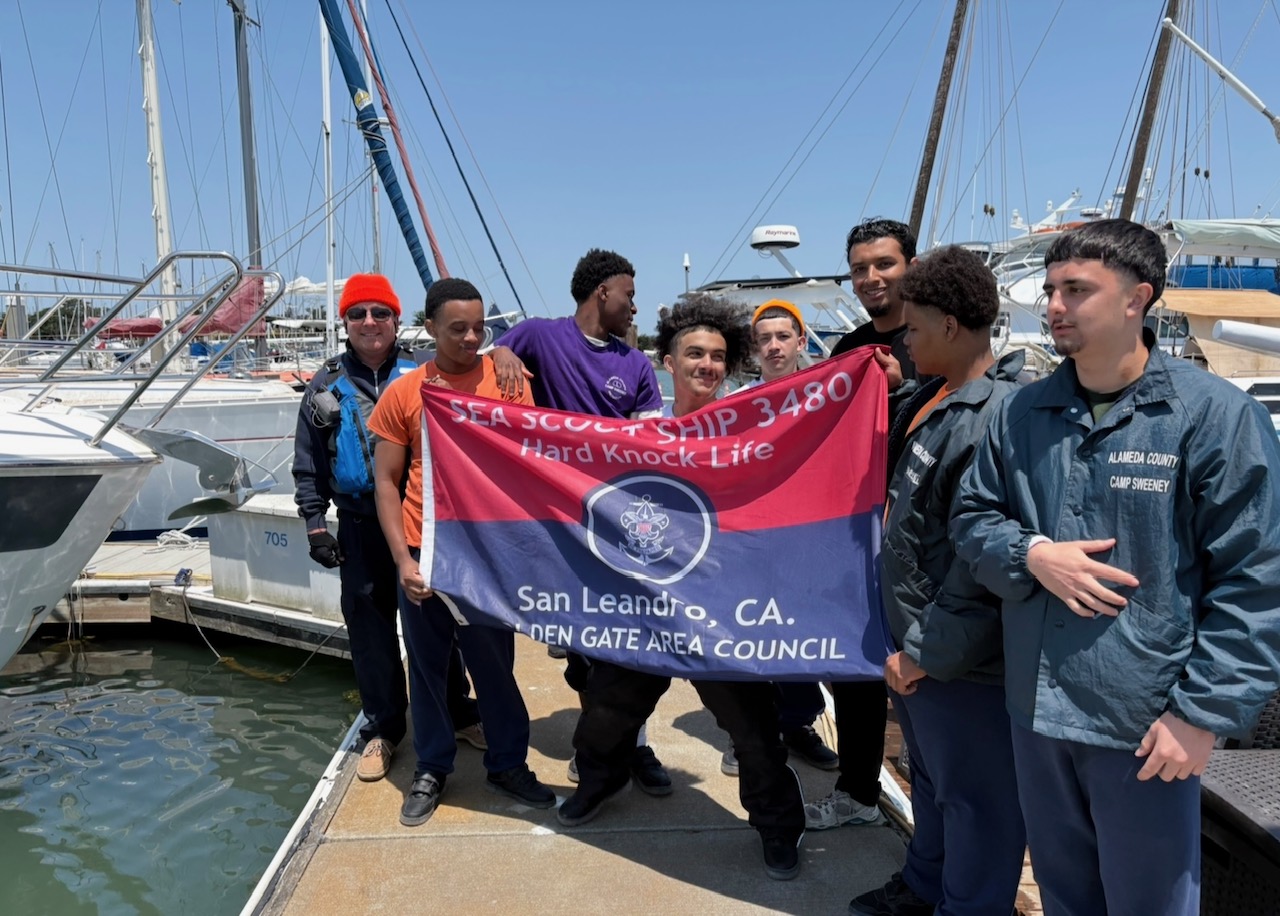
Steve Welch pictured (far left) with a Sea Scout group – Photo provided by Steve Welch and the Sea Scouts
By 2009, the wharf had deteriorated badly. When Sea Scout leaders asked the NPS for a timeline, they were told funding had been requested and would likely arrive by 2016 — the Park Service’s centennial. When the group followed up in 2017, they were stunned to learn the funding request had never been submitted.
Frustrated but proactive, the Sea Scouts rallied a volunteer — Fred Gerard, a Sea Scout alum and piling expert for the Port of San Francisco, who prepared a full repair proposal to replace the pilings at no cost to the government. The NPS rejected the plan. Shortly thereafter, they fenced off the wharf and declared it unsafe.
Present Day Issues: Band-aid solutions by the National Park Service
In 2024, the NPS cut off the decayed pilings and demolished the entire wharf. They then required the Sea Scouts to pay half the cost of a new aluminum gangway to access a small floating dock, which accommodates only two vessels. The old wooden wharf had once supported a dozen — including large ships used for youth training and shipyard education. Welch shares, “This has greatly inconvenienced our access to the water and created difficulties in our teen-training shipyard activities.”
This is more than a tragic anecdote — it’s a blueprint for how San Francisco is losing its maritime soul, dock by dock. Public agencies promise repairs, delay for decades, then dismantle the infrastructure entirely, leaving working-class families, community programs, and Black and Brown maritime voices with nothing but fenced-off memories.
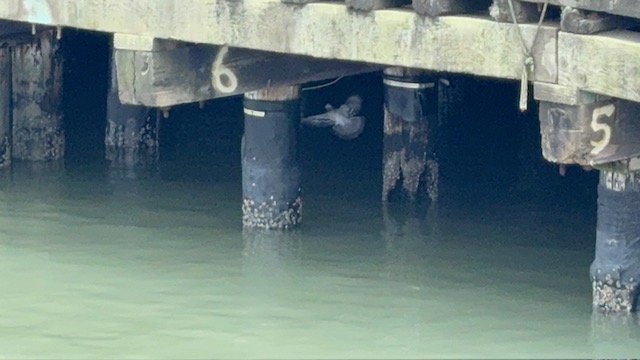
Evidence of piling corrosion beneath Pier 48, often used for events – Photo by Pearci “PJ” Bastiany
Welch’s story is not an isolated case. From District 2 to District 10, multiple piers and wharves along the San Francisco waterfront show visible signs of decay. At Pier 48 (near Third Street and Terry A. Francois Boulevard in Mission Bay), sagging deck structures and exposed wooden pilings suggest imminent structural failure. At the Hunters Point Shipyard, maritime infrastructure critical to potential economic revitalization sits idle and degraded.
This is not merely an aesthetic or maintenance concern. Rotting wooden pilings — many over a century old — are the hidden foundations beneath much of the city’s waterfront. These supports are highly vulnerable to storm surges, seismic activity, and even the gradual pressure of aging structures above. Without reinforcement, a single storm or earthquake could trigger catastrophic collapse.
Earlier this year, a portion of the Santa Cruz Municipal Wharf collapsed into the ocean during a major winter storm — a stark reminder of how climate change, rising tides and decaying infrastructure intersect with devastating consequences. The warning signs are clear, and San Francisco is no exception.
Yet, despite the visible risk and growing calls for action, the San Francisco city budget passed in July makes no mention of funding for pier restoration or shoreline reinforcement. Advocates had hoped the budget would include appropriations for stabilizing the waterfront or at least launch a feasibility study. Instead, the omission suggests city leaders do not view the deteriorating state of the waterfront as a priority.
“I believe this year’s budget sends a clear message,” said Bastiany. “If you’re a working-class waterfront community, if you’re a youth program like the Sea Scouts, or if your pier is crumbling beneath your feet – don’t expect help”
Solutions Are Key
Proposals are now surfacing from community leaders, engineers and organizers to redirect trade revenue from a revitalized Hunters Point Shipyard commercial port to fund infrastructure repair across the entire coastline. The concept, dubbed an Infrastructure Justice Fund, would prioritize pier and piling replacement starting with the city’s most vulnerable and historically underserved districts.
“The Sea Scouts offered to fix their wharf at no cost to the government,” said Bastiany. “If that kind of solution is rejected, the problem is no longer about money. It’s about power, priorities, and whether San Francisco still sees itself as a maritime city that serves its people.”
As the coastline continues to rot into the Bay, many are left asking: How many more piers have to collapse before the city decides to act?
What happened to the Sea Scouts at Aquatic Cove is the same story unfolding at Pier 48, where warped concrete threatens collapse. It mirrors the rotting timbers beneath Pier 9, where the historic ferry boat Klamath is berthed, and Hunters Point, where vital trade and community space sits idle while wooden pilings wither into the tide. This isn’t just a maintenance issue — it’s a citywide infrastructure emergency.
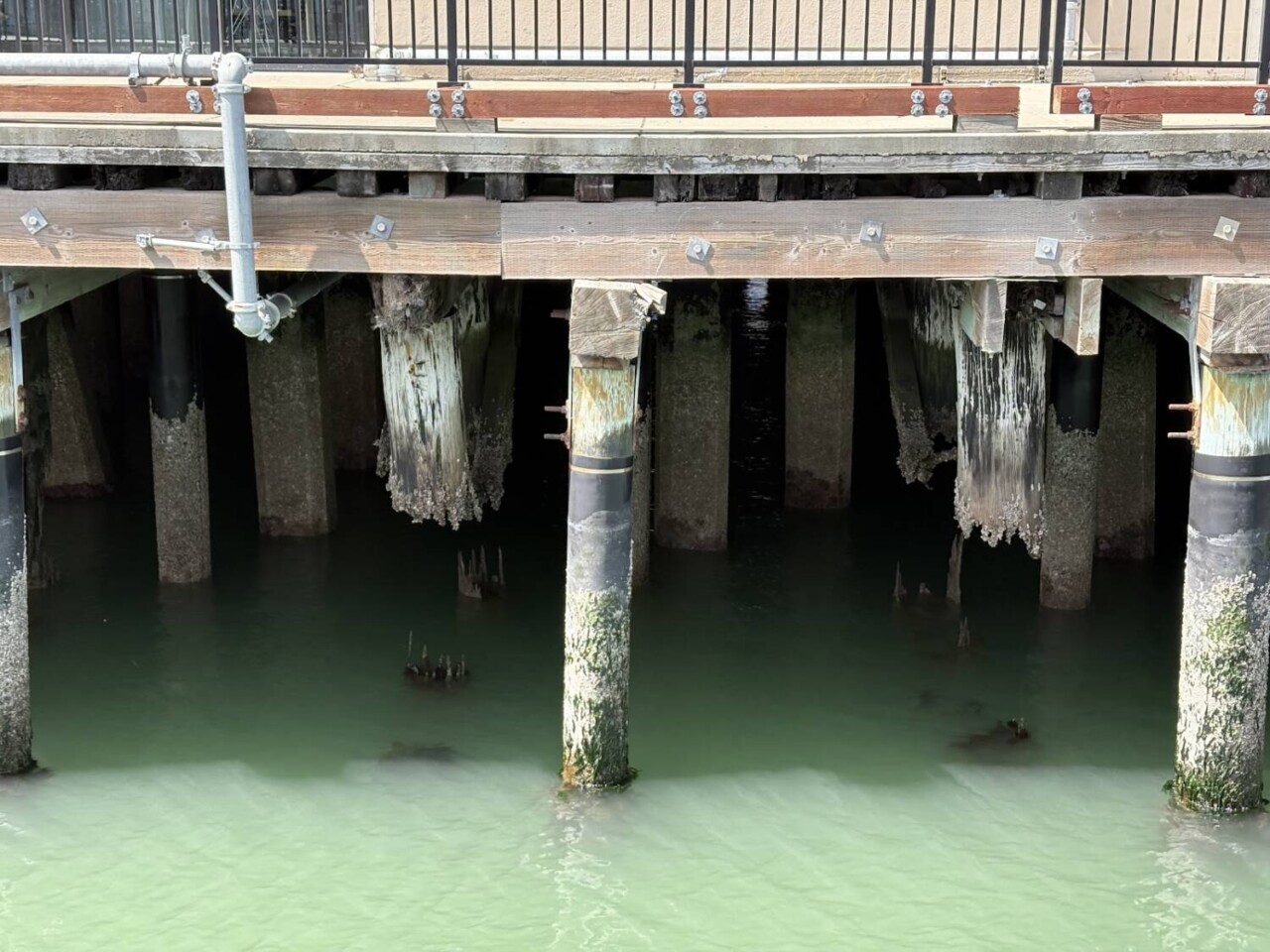
View underneath Pier 9 where the Historic Klamath is berthed – Photo by Pearci “PJ” Bastiany III
There is a way forward. Activists, engineers and community groups are calling for:
- Reinvestment in the San Francisco waterfront, funded by reactivating Hunters Point Shipyard for commercial shipping.
- A citywide Infrastructure Justice Fund, dedicating trade revenue to pier and piling restoration, prioritized by safety and community need.
- A new mandate that community organizations with historic ties to the waterfront — like the Sea Scouts — receive protected access and collaborative decision-making power over repairs and future designs.
The story of the Sea Scouts should not end with a gangway to nowhere. It should spark a coordinated revival of San Francisco’s shoreline, guided by those who live, lead and labor by the water. We must choose between watching the city sink – or rebuilding it from the piers ups.

Pearci “PJ” Bastiany III writes politically engaging articles providing real solutions for real problems in the Bay. He is currently a MPA student at the University of San Francisco. In addition, he is in a directing certificate program at the University of Southern California Film School. He is a licensed boat captain in the State of California.
MONK.
A new collection
Learn More →




